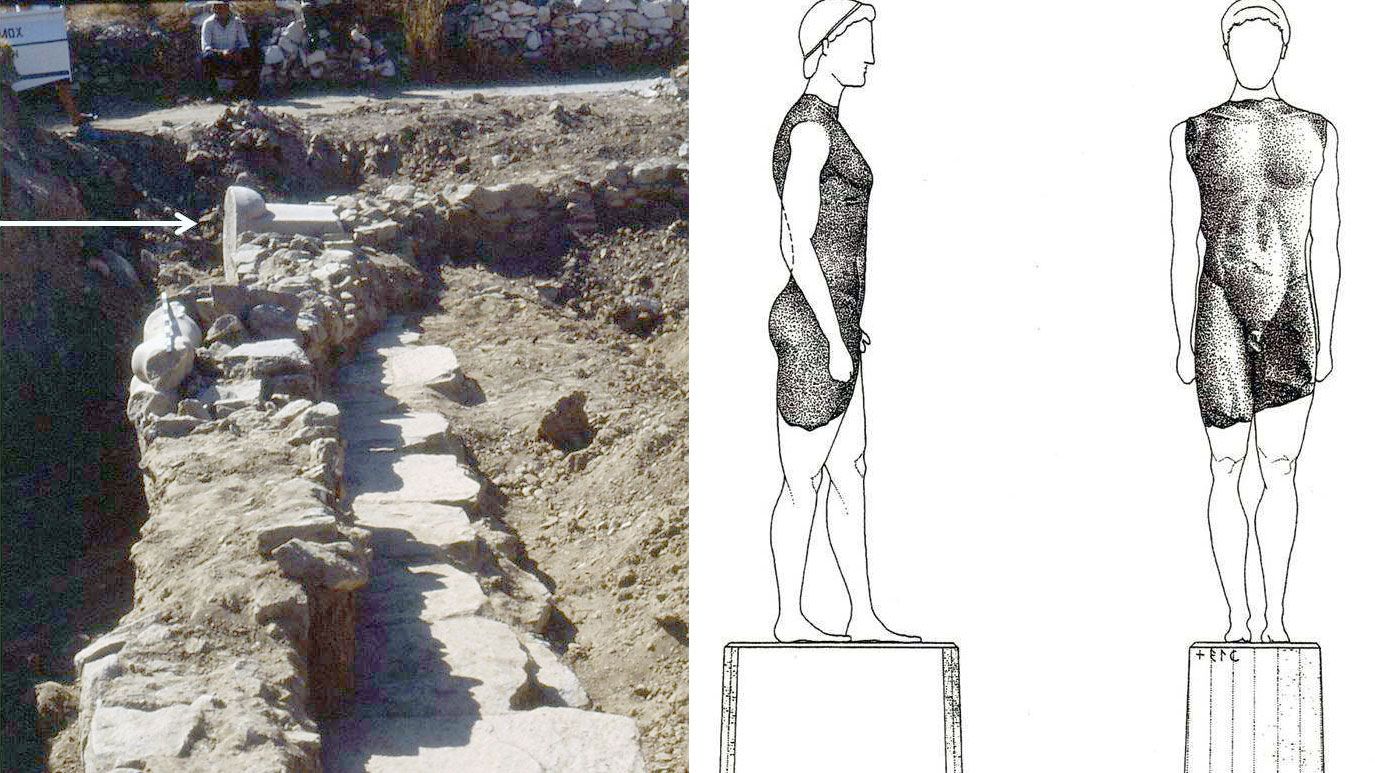A Journey into the Abandoned Thesmophorion
Stepping off the beaten path in Parikia, you encounter an unexpected sight — an archaeological gem seemingly forgotten by time. Agios Panteleimon, a site shrouded in mystery, lays semi-abandoned, inviting only the most curious and imaginative explorers to trespass into its past.

Stepping off the beaten path onto the enchanting island of Paros, you encounter an unexpected sight — an archaeological site seemingly forgotten by time. In the area of Agios Panteleimon in Parikia, a site shrouded in mystery, lays semi-abandoned, inviting only the most curious and imaginative explorers to trespass into its past. For those willing to venture beyond the ordinary, a visit to this secluded sanctuary reveals a fascinating tale of ancient reverence for the feminine divine.
As you carefully navigate your way into the site, you're stepping into what is believed to be the historical location of a Thesmophorion. This ancient sanctuary, dedicated to the goddesses Demeter and Persephone, is a silent testament to Paros's rich spiritual heritage. Erected in the late 6th century BC, this open-air sanctuary is a portal that transports the imaginative visitor back to a time when divine feminine power was deeply revered.

What is Thesmophorion?
The Thesmophorion is a term from ancient Greek religion, referring to the site or sanctuary where the festival of Thesmophoria, dedicated to Demeter and Persephone, was held. The festival, which involved various rituals and ceremonies aimed at securing good harvests and fertility, was exclusively attended by married women. These sanctuaries were often located in or near cities, often on hills or caves. They were key places for rituals, offerings, and enactments, symbolizing the cycle of death and rebirth, aligning with the myth of Demeter and Persephone. Thus, the Thesmophorion represents both a physical location and an integral aspect of ancient Greek religious and societal life.
more about Thesmophoria
Enclosed within the sanctuary, the remnants of a once majestic trapezoidal structure emerge from the ground. Covering an area of around 400 square meters, this enclosure has been a silent observer of centuries of gatherings and rituals. While it was initially constructed in the 6th century BC, the later additions to the structure bear the imprint of the Roman period.
As you explore the site, remnants of the island's rich history reveal themselves. A torso of a marble archaic Kouros was found embedded in a Roman-era wall and seems to hold stories of a bygone era in its stone. Its nearby inscribed base, crafted to mimic the shape of a column drum, speaks of artistic skills passed down through the generations.

Venture to the east of the enclosure, and you'll find oval structures buried under layers of time. They contained remnants of pyres and bones alongside shards of archaic pottery, suggestive of ancient rituals that once brought this place to life.
However, it's the marble Gorgon statue that truly steals the show. Thought to have once been the central acroterion of a temple, this statue stands as an enigma, with no related edifice discovered in the surrounding area.

After further exploration of the site, a significant marble relief was discovered. This piece of art is a testament to the island's past artistic prowess. It is a striking depiction of a participant in the sacred Thesmophoria procession, which links this site to a time of reverence for the divine feminine. The sculpture embodies the essence of a Parian sculptor whose skill rivals that of the Temple of Nike on the Acropolis of Athens.

A visit to Agios Panteleimon is a place to stimulate your imagination. Despite its current state of abandonment, with a little curiosity and respect for its past, this historical site comes alive with tales of a civilization that venerated the divine feminine and celebrated the mysteries of life and death. Despite the state of neglect of the site, as responsible visitors, let's tread lightly, preserving these echoes of history. Unleash your imagination, respect the sacred, and immerse yourself in the echoes of an inspiring past.
Remember that your excitement and passion for this sacred site should inspire and motivate the relevant authorities to make significant improvements, along with restorations and infrastructural improvements for accommodating visitors.








